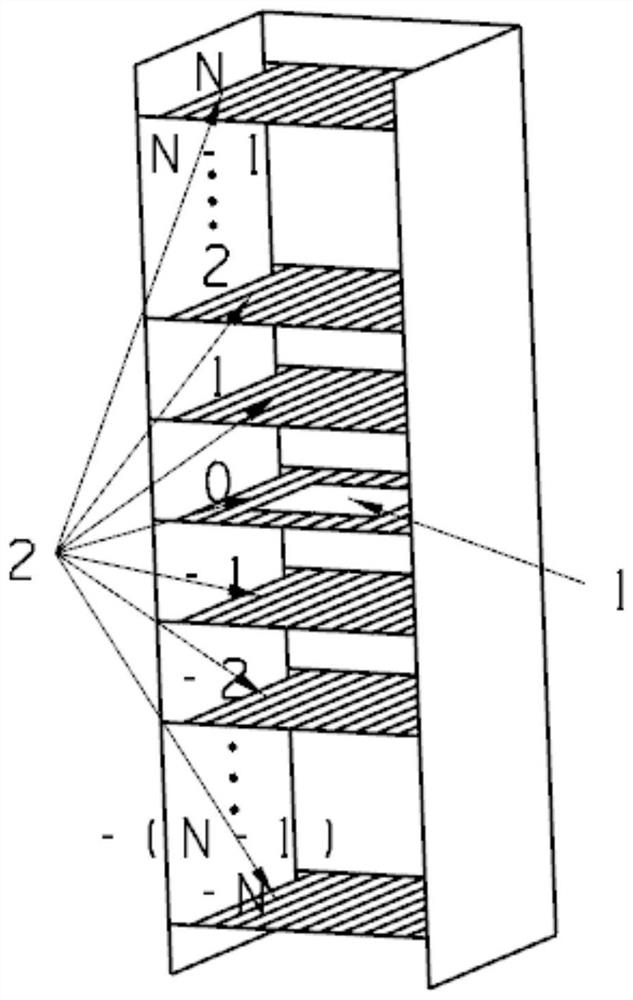Method for improving pore-forming efficiency of metal sublimation pore-forming method based on element reaction/diffusion principle
A pore-making and element-making technology, which is applied in the field of improving the pore-making efficiency of the "metal sublimation pore-making method" based on the principle of element reaction/diffusion, can solve the problems of increasing furnace pressure, furnace and vacuum pump pollution, and reducing furnace service life.
- Summary
- Abstract
- Description
- Claims
- Application Information
AI Technical Summary
Problems solved by technology
Method used
Image
Examples
Embodiment 1
[0024] High-purity iron powder is used as the raw material, and high-purity manganese powder with high sublimation characteristics is selected as the pore-forming element. The high-purity iron powder and manganese powder are mixed at a mass ratio of 50:50. The particle sizes of the selected iron powder and manganese powder are about 35 μm. The uniformly mixed powders were pressed into billets under a pressure of 300 MPa by compression molding, and a batch of samples to be formed with a diameter of 20 mm and a height of 0.5 mm were obtained. Put the sample to be pore-forming into the sintering chamber of the vacuum sintering furnace, then install a metal vapor absorption stage in the sintering chamber, add iron powder and manganese powder on the sample stage 1 to make the pore-forming sample pressed by iron powder and manganese powder. A plurality of compacted pure silicon powder compacts with a diameter of 20 mm and a thickness of 0.2 mm are added to the stage 2 as reactants f...
Embodiment 2
[0026] High-purity iron powder is used as the raw material, and high-purity zinc powder with high sublimation characteristics is selected as the pore-forming element. The high-purity iron powder and zinc powder are mixed at a mass ratio of 60:40. The particle sizes of the selected iron powder and zinc powder are about 40 μm. After mixing evenly, it is vacuum smelted and cast into a cylindrical sample with a diameter of 20 mm. After the homogenization annealing treatment, the Fe-Zn alloy was cut into thin slices with a thickness of 0.2mm by wire electric discharge cutting equipment, and two slices of the cut zinc-iron alloy slices were taken out and put into the sintering chamber of the vacuum air quenching furnace. Then install the metal vapor absorption stage in the sintering chamber, add the sliced zinc-iron alloy on the sample stage 1, add a plurality of pressed pieces with a diameter of 20mm and a thickness of 0.2mm on the reactant stage 2 A compact of pure copper powde...
Embodiment 3
[0028] High-purity iron powder is used as the raw material, and high-purity magnesium powder with high sublimation characteristics is selected as the pore-forming element. The high-purity iron powder and magnesium powder are mixed at a mass ratio of 50:50. The particle size of the selected iron powder and magnesium powder is about 35 μm. The uniformly mixed powders were pressed into billets under a pressure of 300 MPa by compression molding, and a batch of samples to be formed with a diameter of 20 mm and a height of 0.5 mm were obtained. Put the sample to be pore-forming into the sintering chamber of the vacuum sintering furnace, then install a metal vapor absorption stage in the sintering chamber, add the sample to be pore-forming pressed by iron powder and magnesium powder on the sample stage 1, and in the reactant A plurality of compacted niobium pentoxide compacts with a diameter of 20 mm and a thickness of 0.2 mm are added to the stage 2 as reactants for the reaction with t...
PUM
| Property | Measurement | Unit |
|---|---|---|
| thickness | aaaaa | aaaaa |
| particle size | aaaaa | aaaaa |
| particle size | aaaaa | aaaaa |
Abstract
Description
Claims
Application Information
 Login to View More
Login to View More - R&D
- Intellectual Property
- Life Sciences
- Materials
- Tech Scout
- Unparalleled Data Quality
- Higher Quality Content
- 60% Fewer Hallucinations
Browse by: Latest US Patents, China's latest patents, Technical Efficacy Thesaurus, Application Domain, Technology Topic, Popular Technical Reports.
© 2025 PatSnap. All rights reserved.Legal|Privacy policy|Modern Slavery Act Transparency Statement|Sitemap|About US| Contact US: help@patsnap.com

